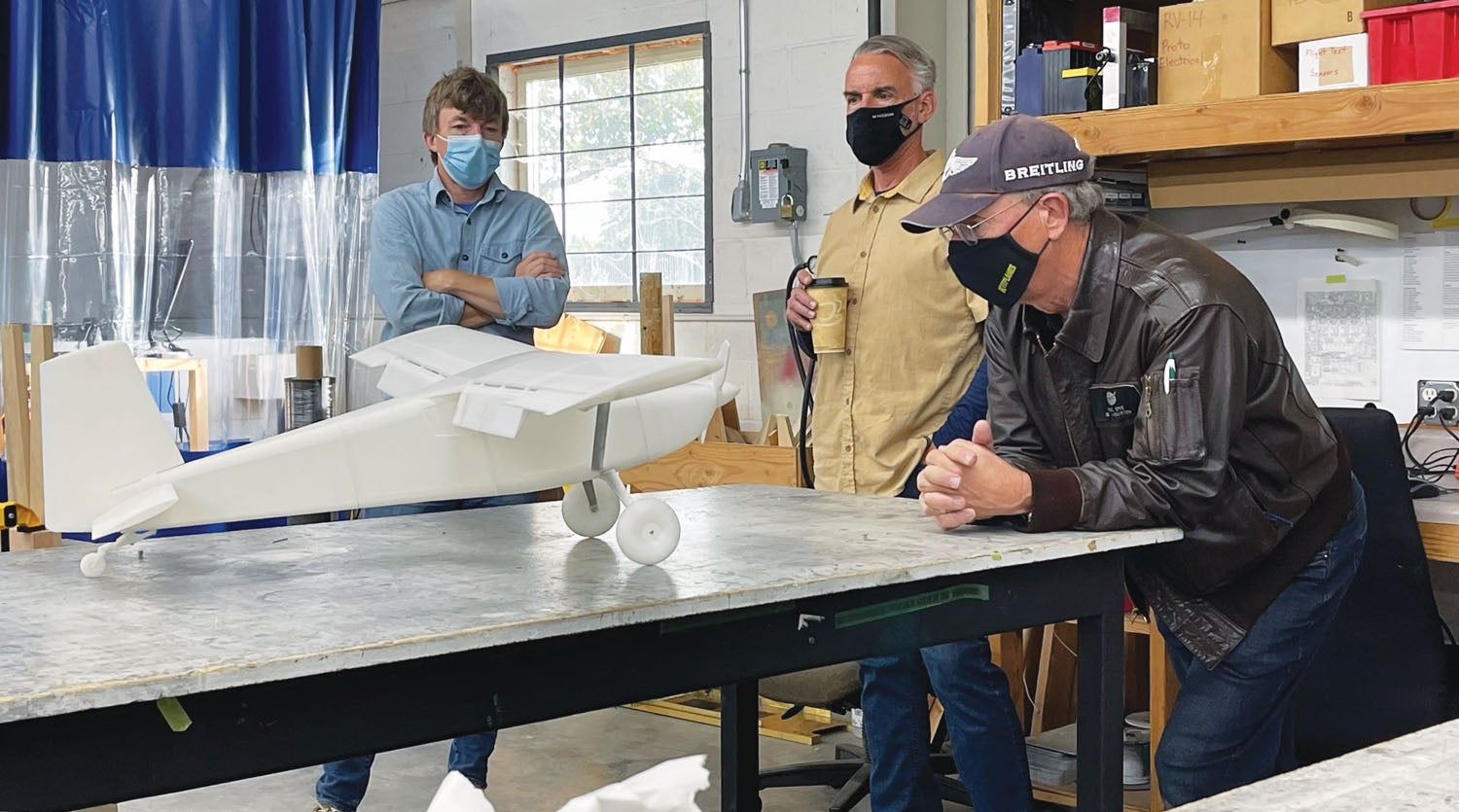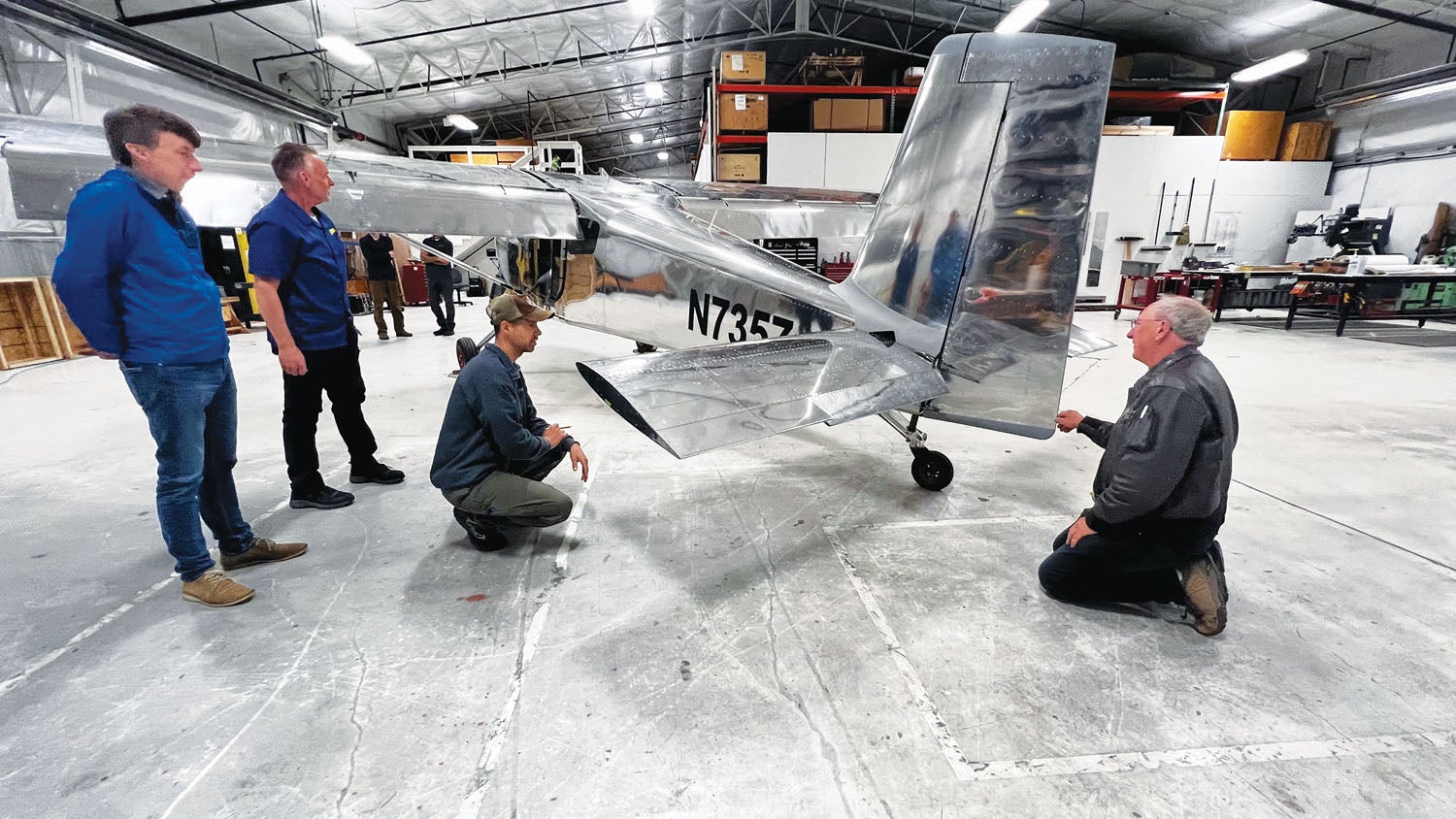
We’ve been working on the development story of the Van’s RV-15 for many months. Paul Dye and I had what I would call exceptional access to the engineering team during the concepting and prototyping of the RV-15. On various trips to the factory, we got to sit in the “pine pigeon,” a wood mockup of the cabin. We got to gaze upon the 3D-printed model and talk to Rian Johnson and his team about the intentions for the airplane. And we got to see the engineering test prototype several times before and soon after the first flight. As we put together this month’s cover story and the related coverage of Van’s 50th anniversary, we were seemingly in daily contact with the factory.
Through all this, Van’s worked tirelessly to keep the details under wraps, to keep the world of Experimental aviation guessing. RV fans at large knew it was going to be a metal, high-wing airplane but beyond that, few outside the factory knew many of the details.
Then social media happened. Actually, an eagle-eyed pilot noticed a shiny high-wing airplane at the Aurora, Oregon, airport, knew enough about the RV-15 and Van’s design ethos—and put two and two together. The individual shared a few fuzzy images into social media and, less than three weeks until AirVenture kicked off, the world got to see the RV-15. Not too many years ago, it would have been possible that even had someone captured an image of the prototype, by the time it got into the world, the announcements would have been made. No putting that genie back into the bottle.

The Reaction Shot
Van’s reacted quickly, putting together a short highlights reel of flight-test footage that both acknowledged that the airplane caught by the lucky photog was indeed the RV-15 and managed teasing it even more without having to reveal too much. Enthusiasts quickly blew up images, pored over every detail and shared their thoughts on type forums and the Van’s YouTube page.
I stifled my snickers at the early (wrong) assumptions but it didn’t take long before really knowledgeable people noted certain defining details, such as the innovative landing gear with hidden, inboard shocks, the RV-14-like cowling and air extractors (which led them to surmise, correctly, that an IO-390 was under there, in turn causing the Rotax partisans to groan) and the cabin-mounted fuel tank. That last item is an artifact of this being an engineering prototype. Carrying the fuel on the pilot’s CG arm is a conservative approach, but it also reflects that Van’s hadn’t settled on the fuel-tank configuration. For that matter, the engineering team didn’t yet know if other systems changes would be necessary or even how the fuel tanks would be constructed—why put them in the way when much around them might change?
You might ask why Van’s didn’t take the RV-15 to some secret test facility, far away from prying eyes, instead of hanging around Aurora, which is a fairly busy airport. There was a plan to do that but the early portions of the flight testing revealed a handful of issues that needed to be resolved—none of which were safety related—and it was simply easier to stay close to the prototype shop and the factory’s CNC machines to churn out replacement pieces to test. Bear in mind that the RV-15 first flew about a month before AirVenture, and the plan had always been to take it to the big show for its public debut. When you add up all that had to be done—especially if you plan for the possibility that the airplane would have to be trucked there—time was incredibly tight. Hours counted.
The nature of print publishing is that this is written before the decision was made whether to fly or truck the RV or, still a possibility, to not bring it at all, though my impression is that Van’s will move heaven and earth to get something to AirVenture. It’s also worth mentioning that even if the RV-15 makes a successful flight to Oshkosh and back, there’s still a massive amount of work to be done.
The Handles
Then, of course, come the more subjective items. Rian Johnson told Paul and me repeatedly that the RV-15 has to fly like an RV. While that was definitely a challenge when the company developed its much heavier, larger RV-10, the RV-15 presents similar obstacles. Previous RVs have had good short-field performance despite sharp, balanced handling and efficient speed being their primary design points. Backcountry utility leans heavily on low stall speed, excellent runway performance and a sprightly climb gradient. The RV-15 can’t be “pretty good” in these categories; it has to excel. And it has to do so without driving like the crate it came in.
Paul and I have been warned that the airplane you see on these pages might undergo significant changes before it’s finalized and kitted. It seems likely to have a different engine mount, even for the IO-390, and it might have a different horizontal tail. The wing area might stay the same, or it could be reduced. I doubt they’d put more on it, but I’ve been wrong before. Each time the engineering team identifies something that could be done better, it sets in motion another round of prototyping, testing and then coordination with the manufacturing team. So-called knock-on effects can eat time like you wouldn’t believe.
The Next Gen
I’m happy to introduce Ariana Rayment to our roster of writers. Ariana’s enthusiasm for Experimental aircraft began at the deep end, so to speak, taking a purchasing job with Glasair Aviation and learning the homebuilt world from the industry side first. I won’t give away any more of her story, which posts later this month, but it’s a fun read that reminds me of why I got started in this business—because it’s a blast. Aviation needs young, enthusiastic newcomers to help encourage and usher in the next generation of pilots and builders. They need an authentic voice on these pages, throughout our website and, especially, in our videos. It’s long past time to give the “kids” their chance. Welcome in, Ariana!
Photos: Courtesy of Van’s Aircraft.














Only thing needed to please my eye would be a fairing on the front face of the vertical fin , apart from that a complete downsize replacement for my C180 One day ?.